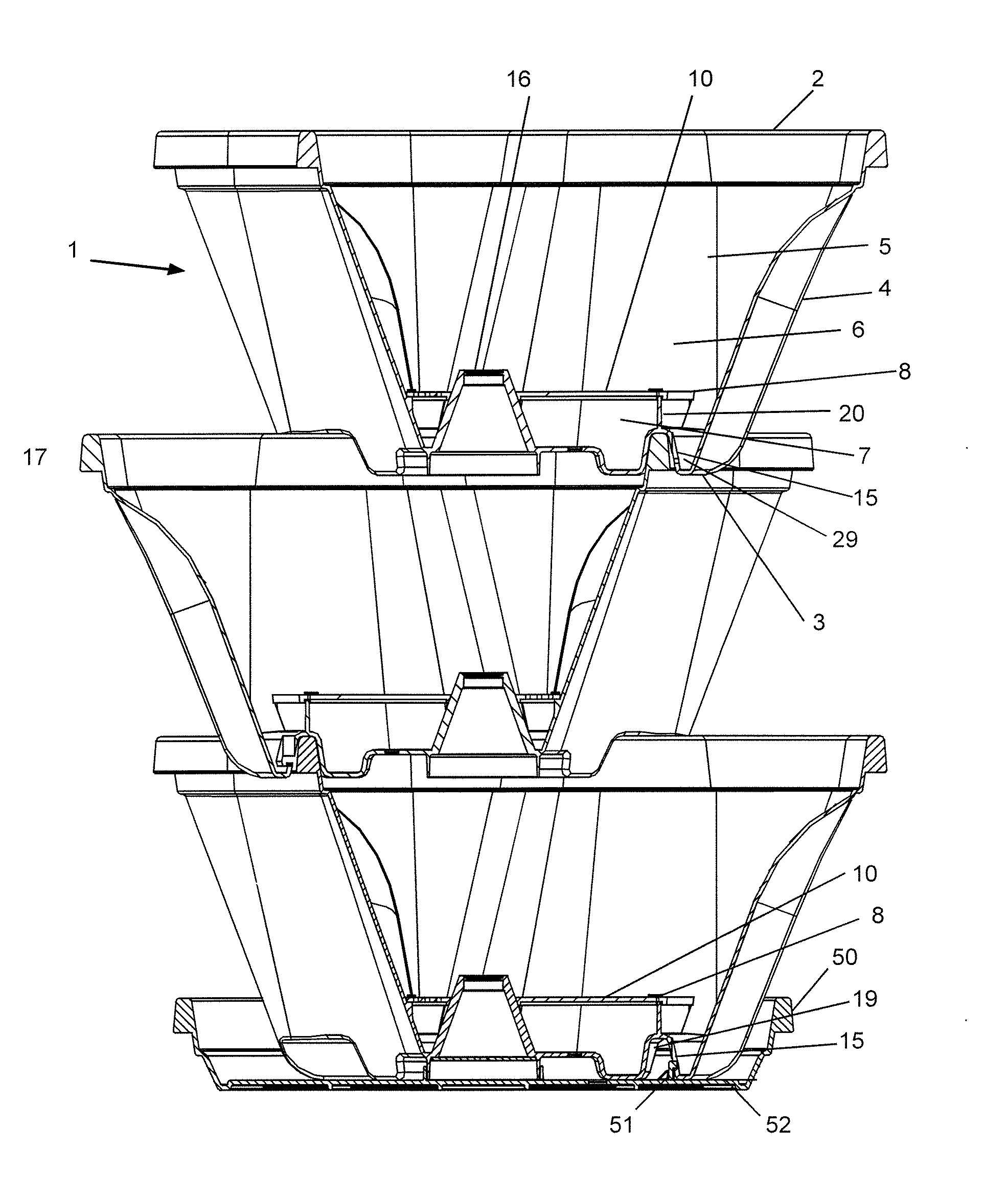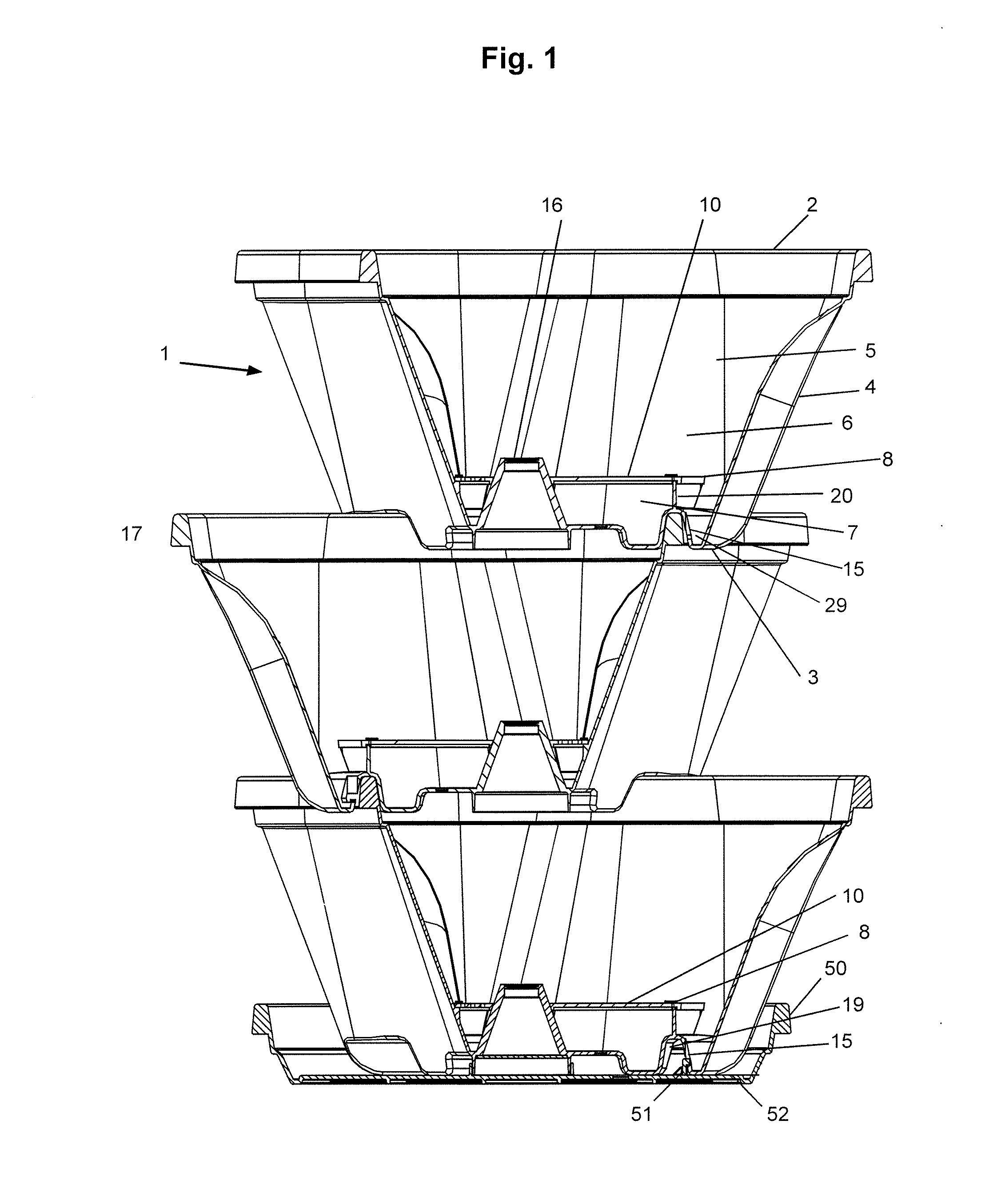Stackable plant pot
a plant pot and planter technology, applied in the field of plant pots, can solve the problems of not being able to be hung or suspended, the arrangement of plant pots is not adapted to be used in any suitable manner, and the design and construction of each individual pot is quite complex
- Summary
- Abstract
- Description
- Claims
- Application Information
AI Technical Summary
Benefits of technology
Problems solved by technology
Method used
Image
Examples
examples
[0092]The drainage system of an embodiment of this invention has been designed to transform the stacked planting arrangement by the selective removal of blind drainage holes to enable it to have a number of uses, including:
[0093](1) Standard Completely Free Draining Planting System—which is useful for plants such as cacti, succulents, orchids and begonia's etc.
[0094]Here the opening of certain ‘blind’ drainage holes, which are located at adjacent a lowermost point of the cavity is desired. The opening of such blind drainage holes helps to ensure that there are no overly moist areas in the plant pots.
[0095](2) A Self-Watering Stacked Planting System—which is useful for all moisture loving plants such as ferns, herbs, and annuals etc.
[0096]Here only the opening of certain other drainage holes is required. These drainage holes are typically located above the base of the cavity so that some water is retained in the cavity. This will allow the cavity (ie water reservoir) to fill and main...
PUM
 Login to View More
Login to View More Abstract
Description
Claims
Application Information
 Login to View More
Login to View More - R&D
- Intellectual Property
- Life Sciences
- Materials
- Tech Scout
- Unparalleled Data Quality
- Higher Quality Content
- 60% Fewer Hallucinations
Browse by: Latest US Patents, China's latest patents, Technical Efficacy Thesaurus, Application Domain, Technology Topic, Popular Technical Reports.
© 2025 PatSnap. All rights reserved.Legal|Privacy policy|Modern Slavery Act Transparency Statement|Sitemap|About US| Contact US: help@patsnap.com



